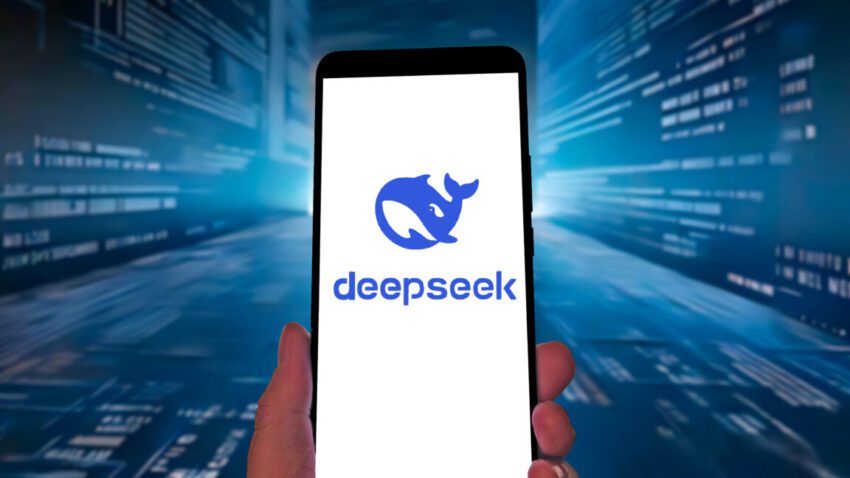
deepseek tests sparse attention to slash ai DeepSeek has introduced a new experimental language model that aims to significantly reduce AI processing costs through an innovative approach known as “sparse attention.”
deepseek tests sparse attention to slash ai
Understanding the Challenge of Long Sequences in AI
Artificial intelligence (AI) has made remarkable strides in recent years, particularly in natural language processing (NLP). However, one persistent challenge remains: the processing of long sequences of text. This issue is particularly evident in conversational AI systems like ChatGPT, which can experience slowdowns during extended interactions. The underlying problem stems from the mathematical complexity involved in handling lengthy text inputs, which demands substantial computational resources.
For major tech companies in the United States, the solution often lies in investing heavily in advanced hardware. These companies can afford to scale up their infrastructure, deploying more powerful chips and servers to manage the computational load. However, the landscape is different for smaller firms, particularly those facing restrictions on technology access. This is the case for DeepSeek, a Chinese AI company that has been impacted by export restrictions limiting its access to cutting-edge AI chips.
DeepSeek’s Innovative Approach: Sparse Attention
On Monday, DeepSeek announced the release of an experimental version of its latest simulated reasoning language model, dubbed DeepSeek-V3.2-Exp. This model introduces a novel implementation of a computational technique known as “DeepSeek Sparse Attention” (DSA). Sparse attention is a method that aims to optimize the way AI models process information, particularly when dealing with long sequences of text.
The concept of sparse attention is not entirely new; it has been explored by leading AI researchers and companies for several years. OpenAI, for instance, pioneered the use of sparse transformers in 2019, which played a crucial role in the development of its GPT-3 model. Similarly, Google Research published work on “Reformer” models in 2020, which also leveraged sparse attention techniques. Despite the known advantages of sparse attention, the extent to which Western AI companies currently employ this approach in their latest models remains largely undisclosed.
What Makes DeepSeek’s Implementation Unique?
DeepSeek claims that its version of sparse attention achieves “fine-grained sparse attention for the first time.” This assertion suggests that the company has developed a method that allows for more precise and efficient processing of information compared to previous implementations. The implications of this advancement are significant, particularly in terms of cost efficiency. To illustrate the effectiveness of its new model, DeepSeek has reduced its API prices by 50 percent, a move intended to showcase the efficiency gains achieved through the use of DSA.
A Brief History of Sparse Attention in AI
To fully appreciate the significance of DeepSeek’s announcement, it is essential to understand the historical context of sparse attention in AI. The concept emerged as researchers sought ways to improve the efficiency of transformer models, which have become the backbone of many state-of-the-art NLP systems.
Transformers, introduced in the groundbreaking paper “Attention is All You Need” by Vaswani et al. in 2017, revolutionized the field of NLP. However, as the size of these models grew, so did the computational demands associated with processing long sequences of text. Traditional attention mechanisms require quadratic time complexity, which becomes increasingly prohibitive as the input length increases.
This challenge led to the exploration of sparse attention mechanisms, which aim to reduce the computational burden by focusing on only a subset of the input tokens. By doing so, these models can maintain performance while significantly decreasing the amount of computation required. OpenAI’s work on sparse transformers and Google Research’s Reformer models were pivotal in this regard, demonstrating the potential of sparse attention to enhance model efficiency.
Implications of DeepSeek’s Development
The introduction of DeepSeek’s DSA has several implications for the AI landscape, particularly in the context of cost efficiency and accessibility. As AI models become increasingly complex and resource-intensive, the ability to optimize processing costs is crucial for both developers and end-users.
By reducing API prices by 50 percent, DeepSeek is not only making its technology more accessible but also setting a precedent for other companies in the industry. This move could encourage competition among AI providers to explore similar efficiency-enhancing techniques, ultimately benefiting consumers through lower costs and improved performance.
Potential Impact on the Global AI Market
DeepSeek’s advancements could also have broader implications for the global AI market. As a company operating under export restrictions, DeepSeek’s ability to innovate and deliver efficient solutions may position it as a significant player in the AI space, particularly in regions where access to advanced hardware is limited.
Moreover, the competitive landscape may shift as companies like DeepSeek demonstrate that it is possible to achieve high performance with limited resources. This could lead to a diversification of AI providers, as smaller firms leverage innovative techniques to carve out their niche in the market.
Stakeholder Reactions and Future Directions
The announcement of DeepSeek’s DSA has garnered attention from various stakeholders in the AI community. Researchers and industry experts are keenly observing the company’s progress, particularly in light of the ongoing competition between Western and Chinese AI firms. The ability of DeepSeek to innovate under constraints may serve as a case study for other companies facing similar challenges.
Furthermore, the potential for cost reductions in AI processing could lead to increased adoption of AI technologies across various sectors. Businesses that have previously hesitated to invest in AI due to high costs may find new opportunities to integrate these technologies into their operations, thereby driving further innovation and development.
Looking Ahead: The Future of Sparse Attention
As DeepSeek continues to refine its DSA and explore its applications, the future of sparse attention in AI remains a topic of significant interest. Researchers are likely to build upon DeepSeek’s findings, further enhancing the efficiency of AI models and expanding their capabilities.
In addition to cost savings, the advancements in sparse attention could lead to improvements in model performance, enabling AI systems to handle more complex tasks and deliver more accurate results. As the field of AI continues to evolve, the integration of innovative techniques like DSA will be crucial in shaping the next generation of AI technologies.
Conclusion
DeepSeek’s introduction of its experimental language model, DeepSeek-V3.2-Exp, marks a significant milestone in the ongoing quest for efficiency in AI processing. By leveraging sparse attention techniques, the company aims to reduce costs and enhance performance, setting a new standard for the industry. As stakeholders closely monitor the implications of this development, the future of AI processing looks promising, with the potential for increased accessibility and innovation across the board.
Source: Original report
Was this helpful?
Last Modified: October 1, 2025 at 2:37 am
0 views















